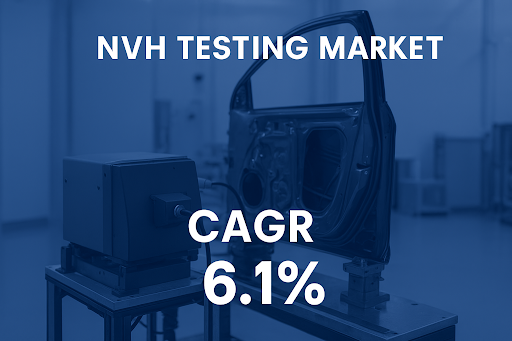
NICU Catheters Market Set to Experience Steady Growth Through 2032
- Business
- October 8, 2025
- No Comment
The global NICU catheters market has been witnessing consistent growth over the past few years, driven by advancements in neonatal care and increasing investments in neonatal intensive care units (NICUs) across the globe. In 2023, the market was valued at USD 400 million, highlighting its critical role in improving neonatal health outcomes. With the increasing prevalence of premature births and associated complications, the demand for specialized catheters designed for neonatal care has never been higher. Experts project that the NICU catheters market will reach USD 670 million by 2032, expanding at a compound annual growth rate (CAGR) of 5.87% during the forecast period of 2024 to 2032.
Rising Demand for Advanced Neonatal Care Solutions
The growth of the NICU catheters market is closely linked to the rising demand for advanced neonatal care solutions. Neonatal catheters are essential medical devices used in NICUs for the management of critically ill newborns. They facilitate precise administration of fluids, medications, and parenteral nutrition while minimizing risks of infection and other complications. With medical professionals increasingly focusing on personalized and safe treatment for neonates, hospitals and healthcare centers are adopting innovative catheter technologies that are smaller in size, highly flexible, and designed specifically for the delicate physiology of newborns.
Additionally, healthcare infrastructure is expanding rapidly in both developed and developing regions. Investments in state-of-the-art NICU facilities have surged, particularly in countries with high neonatal mortality rates. Governments and private healthcare organizations are striving to improve survival rates among premature and critically ill infants. This push for better neonatal care has directly contributed to the growing adoption of NICU catheters.
Technological Advancements Driving Market Expansion
Technological innovation is another key factor driving growth in the NICU catheters market. Manufacturers are increasingly focusing on developing catheters with enhanced biocompatibility, reduced infection risk, and improved ease of insertion. Recent advances include antimicrobial-coated catheters, ultra-thin designs suitable for extremely low birth weight infants, and devices with integrated monitoring capabilities. These innovations not only improve patient safety but also reduce the workload on NICU staff by streamlining catheter management.
Moreover, research and development initiatives in the neonatal care sector are fostering the creation of next-generation catheters with enhanced durability and functionality. Hospitals are seeking products that can minimize complications such as bloodstream infections, thrombosis, and vascular injuries, which are common concerns in NICU procedures. As a result, the market is witnessing steady adoption of advanced catheter technologies, which is expected to continue fueling growth over the next decade.
Regional Insights: North America and Asia Pacific Leading the Charge
North America currently holds a significant share of the NICU catheters market, owing to the presence of well-established healthcare infrastructure, high healthcare expenditure, and a growing focus on neonatal health. The United States, in particular, has witnessed increasing adoption of technologically advanced NICU catheters due to stringent regulatory frameworks and rising awareness among healthcare providers. In addition, well-funded research initiatives and collaborations between hospitals and medical device manufacturers have accelerated product innovation in the region.
Meanwhile, the Asia Pacific region is emerging as a high-growth market for NICU catheters. Rapid urbanization, rising healthcare expenditure, and improving access to neonatal care facilities are driving market expansion in countries such as India, China, and Japan. The increasing prevalence of premature births in the region, coupled with government initiatives to improve neonatal outcomes, is expected to create significant demand for NICU catheters over the forecast period. As hospitals modernize their NICU units and adopt cutting-edge devices, the region is likely to experience robust market growth.
Challenges Facing the NICU Catheters Market
Despite the promising growth trajectory, the NICU catheters market faces several challenges. The high cost of advanced catheter technologies can be a limiting factor, particularly for small and mid-sized hospitals in developing countries. Additionally, strict regulatory requirements for medical devices, coupled with the need for rigorous clinical trials, can delay product launches and increase operational costs for manufacturers.
Another concern is the risk of catheter-related infections, which remains a critical issue in NICU settings. While technological advancements have mitigated some of these risks, hospitals must still invest in staff training, strict hygiene protocols, and monitoring systems to ensure safe catheter usage. Addressing these challenges will be crucial for sustained market growth in the coming years.
Future Outlook: Sustained Growth Driven by Innovation and Awareness
Looking ahead, the NICU catheters market is poised for sustained growth driven by continuous innovation, rising awareness of neonatal health, and expanding healthcare infrastructure. Manufacturers are likely to focus on developing cost-effective solutions that cater to a wider range of neonatal care needs while ensuring high safety standards.
The integration of smart technologies, such as catheters with sensors for real-time monitoring and automated fluid management systems, could further enhance market potential. As hospitals increasingly adopt these intelligent solutions, patient outcomes are expected to improve, creating greater confidence among healthcare providers in NICU catheter usage.
Furthermore, collaborations between medical device companies, research institutions, and government agencies will likely accelerate product development and distribution, particularly in emerging markets. With growing emphasis on reducing neonatal mortality rates globally, the demand for specialized NICU catheters is expected to remain strong.
Conclusion: A Growing Market with Transformative Potential
The NICU catheters market has established itself as a critical segment of neonatal healthcare, reflecting the broader global focus on improving outcomes for premature and critically ill infants. Valued at USD 400 million in 2023 and projected to reach USD 670 million by 2032, the market is expected to grow at a CAGR of 5.87% from 2024 to 2032. Factors such as rising demand for advanced neonatal care solutions, technological innovations, regional growth in North America and Asia Pacific, and increasing investments in NICU infrastructure are driving this growth.
Despite challenges such as high costs and regulatory complexities, the market’s future remains bright, with significant opportunities for manufacturers and healthcare providers alike. As innovation continues to enhance safety and efficacy, NICU catheters will play an increasingly vital role in saving lives and improving neonatal care worldwide.



